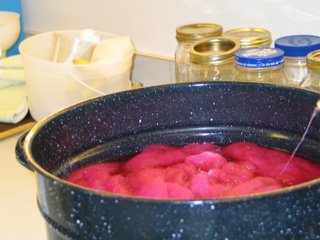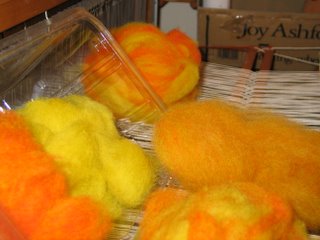Knitting Olympics
 As of Friday night, I was short about 3 hats to finish. But today, the final count is 18!! Yes, 18 HATS! The last one was cast on during the car ride out to Vancouver to watch the Closing Ceremonies at the Vancouver Library Square. And I finished binding off just as the Olympic flag was handed over to Mr. Mayor of Vancouver - Sam Sullivan. That's 2 hats over my goal of 16!
As of Friday night, I was short about 3 hats to finish. But today, the final count is 18!! Yes, 18 HATS! The last one was cast on during the car ride out to Vancouver to watch the Closing Ceremonies at the Vancouver Library Square. And I finished binding off just as the Olympic flag was handed over to Mr. Mayor of Vancouver - Sam Sullivan. That's 2 hats over my goal of 16!I decided to knit a few extra hats when I found I had leftover time because some of the hats looked a bit odd. It was more a design feature (like the flat top hat...what was I thinking?!) Anyhow, it's all good...the real winners here will be the kids these hats will be going to, right?
Perhaps the whole idea of the Knitting Olympics started as a whim on Yarn Harlot part but it was so well-received by knitters all around the world. Over 4000 knitters gave their personal best during the 16 day Olympic event. At the lighting of the torch, knitters cast on their projects. The only goal is to finish whatever we set out for ourselves by the end of the closing ceremonies.
I've participated in Knit-alongs before but nothing like this. I have to admit that if it wasn't for the fact that I had publicly committed myself, I would not have finished this many hats. It was a lot of fun reading what challenges other knitters were facing.
And like the other Olympic, there were teams from all over the world (and teams for just about any reason to knit). Team Canada had several get-togethers for the opening and closing ceremonies. From the pics folks have posted, a good time was had by all.
This was a lot of fun and I thank the Yarn Harlot and her team for organizing the Knitting Olympics and the organizers of Team Canada for giving us a cyberplace to meet. It was a great feeling to be part of something this big.
I hope to see everyone in the 2010 Knitting Olympics. It will be held right here in my backyard (practically).
Happy Knitting!
Lavender







